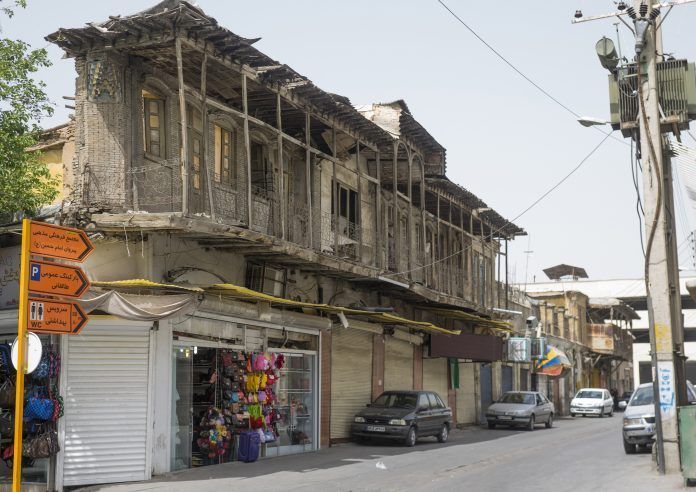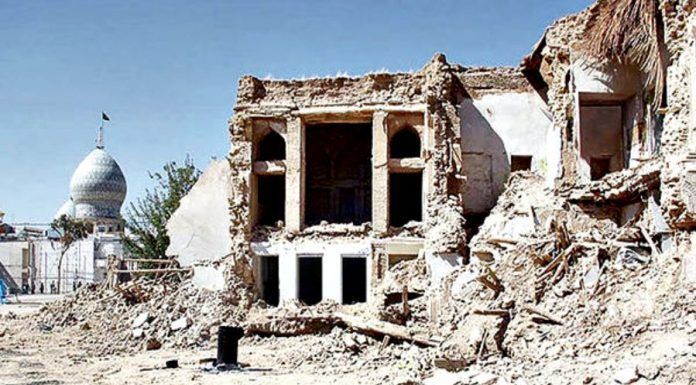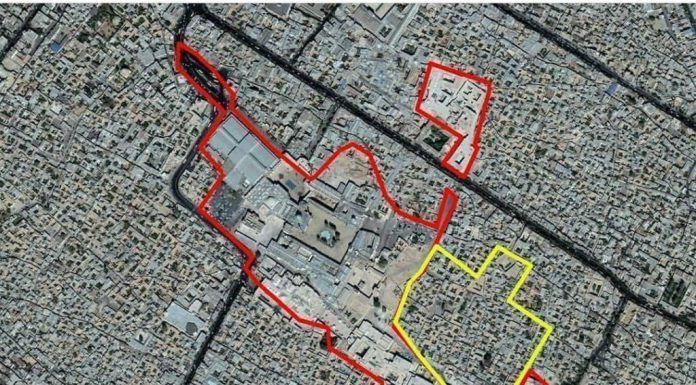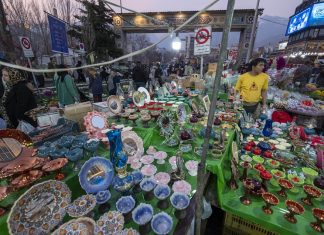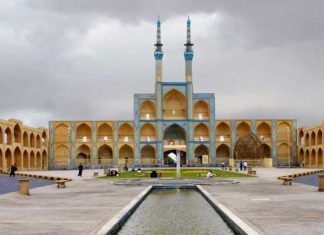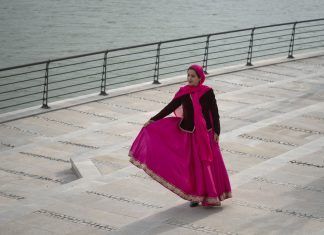By Kayhan Life Staff
The government of Iranian President Ebrahim Raisi is reportedly planning to demolish some 200 historic houses in Shiraz to expand the Shah-e-Cheragh Mosque and shrine complex. The proposed plan reportedly calls for annexing some 57 hectares of land where these houses are located.
Shah-e-Cheragh is a funerary monument and mosque, housing the tombs of the brothers Ahmad and Mohammad, sons of the Shia seventh Imam Musa ibn Jafar al-Khadim.
The plan has sparked public outcry, prompting Iran’s Minister of Cultural Heritage, Handicraft and Tourism, Ezatollah Zarghami, to say that “the proposal has been submitted for a comprehensive review to a committee of experts.”
Speaking on the sidelines of a symposium on a century of Iran tourism, held in Tehran on Oct. 19-20, Mr. Zarghami said: “If you are a reporter working with us to clarify issues, then you must listen to my comments carefully. I believe we are facing several issues which we must resolve together and with the help of expert advice.”
Asked about the expansion of Shah-e-Cheragh and whether the houses marked for demolition should be included on the list of national heritage sites, Zarghami said: “There are several issues which those of us in the tourism family must discuss and resolve.”
Zarghami noted that a team made up of various government agencies would review the proposal and urged the reporters to “consider the historical significance of Shiraz, and spend three to four hours visiting people’s homes.”
During a recent visit to Fars Province, President Raisi and his cabinet approved the formation of a working group to implement the “Plan to Expand Shah-e-Cheragh by 57 Hectares.” The group includes representatives from the Ministry of Cultural Heritage, Handicraft and Tourism, Shiraz City Council, and Fars governor-general’s office.
The three-member committee will review the Shah-e-Cheragh expansion project and ultimately decide whether to demolish some 200 houses around the shrine. While the Cultural Heritage, Handicraft and Tourism Organization (CHHTO) has already listed all structures that meet the criteria for being on the national heritage list, the Ministry of Cultural Heritage, Handicraft, and Tourism will ultimately decide which building should be on the list of protected sites. Also, by law, the Supreme Council of Architecture and Urban Planning must approve every plan.
With a majority of 2-1 vote, the working group has approved demolishing the homes to the detriment of the historical texture of Shiraz. While Shiraz City Council and Fars governor-general’s office voted in favor of the proposal, the Ministry of Cultural Heritage, Handicraft, and Tourism reportedly voted against it.
Commenting on Ebrahim Raisi and his cabinet’s visit to Shiraz, Governor-General of Fars Province, Mohammad Hadi Imanieh, said the president believed the buildings were a testament to the artistic excellence of Iranian civilization and must be protected against any harm.
“Plans were made during the trip to repair and renovate these buildings,” Mr. Imanieh added. “We have no plan to put a loader vehicle at any site or demolish any building.”
The “Shrine-to-Shrine” project, connecting Shah-e-Cheragh Mosque to the tomb of Seyyed Alaeddin Husayn, has been in the works for many years. The project includes building a public square six times larger than a football pitch.
Meanwhile, to prevent the destruction of Shiraz’s historic landmarks, the CHHTO and the Supreme Council of Architecture and Urban Planning both have listed several buildings as national heritage sites.
[aesop_image img=”https://kayhanlife.com/wp-content/uploads/2021/10/2015-10-28T000000Z_1321836817_MT1HNSLCS0009DP1FN_RTRMADP_3_HANS-LUCAS-scaled.jpg” panorama=”off” credit=”Motorbikes Parked Along A Narrow Street With Arches, Fars Province, Shiraz, Iran. REUTERS./” align=”center” lightbox=”on” captionsrc=”custom” captionposition=”left” revealfx=”off” overlay_revealfx=”off”]
There is no historical background to justify the “Shrine-to-Shrine” project, which will deface Shiraz’s landmarks and force many people to move. The project entails demolishing some 339 structures, occupying an area of 47,500 square meters.
In 1995, many structures, occupying an area of 8,000 hectares around the two shrines, were destroyed to build offices and business parks. The project gutted the historic heart of Shiraz.
Experts at the CHHTO say that there is already a road connecting the north side of Seyyed Alaeddin Husayn’s tomb to Shah-e-Cheragh, 20 to 40 meters wide. It only needs to be re-landscaped to accommodate large mourning processions. So, there is no need to destroy many houses to build a new corridor connecting these two sites.
It is costly to build a massive square, and it requires many homes to be demolished. In recent years, there have been several other such plans, including a building project around the shrine of the eighth Shia Imam Reza in Mashhad, the capital of the northeastern province of Khorasan Razavi. Many structures were demolished to build a shopping mall and a business park.
A newly appointed advisor to the Ministry of Roads and Urban Development recently proposed to renovate historic homes around holy shrines and convert them to guest houses for the pilgrims. Hojjatollah Lotfollah Dejkam, the caretaker of the Shah-e-Cheragh Mosque, welcomed the suggestion. However, President Raisi’s recent visit to Fars Province has once again sparked discussions on demolishing houses.

